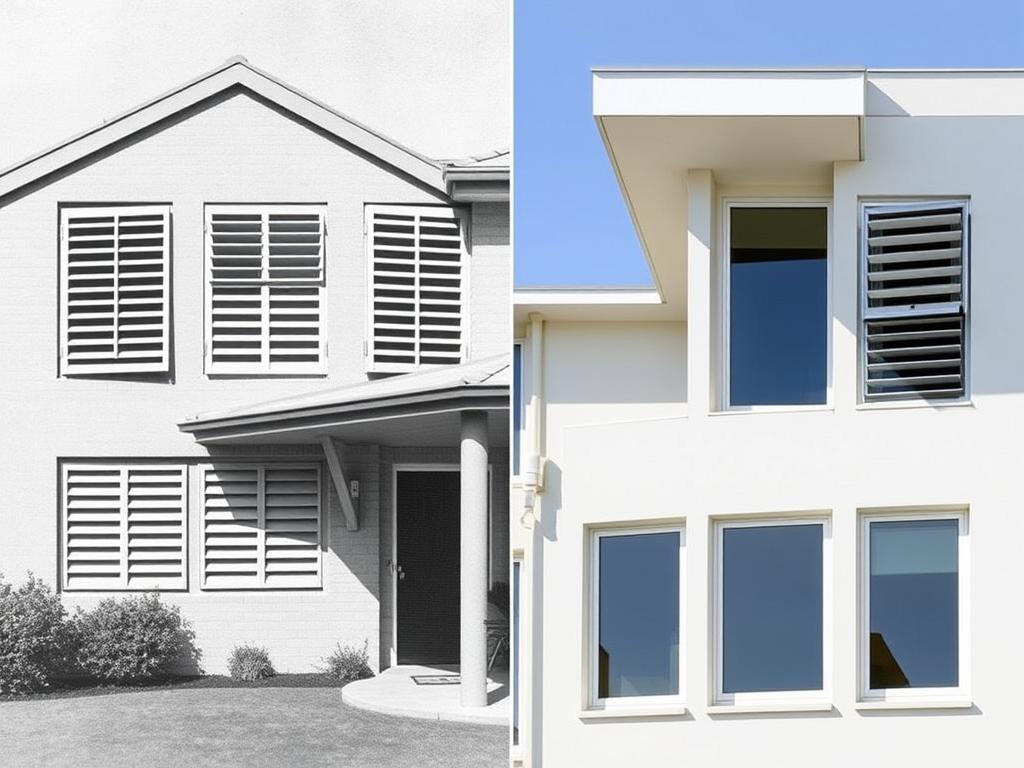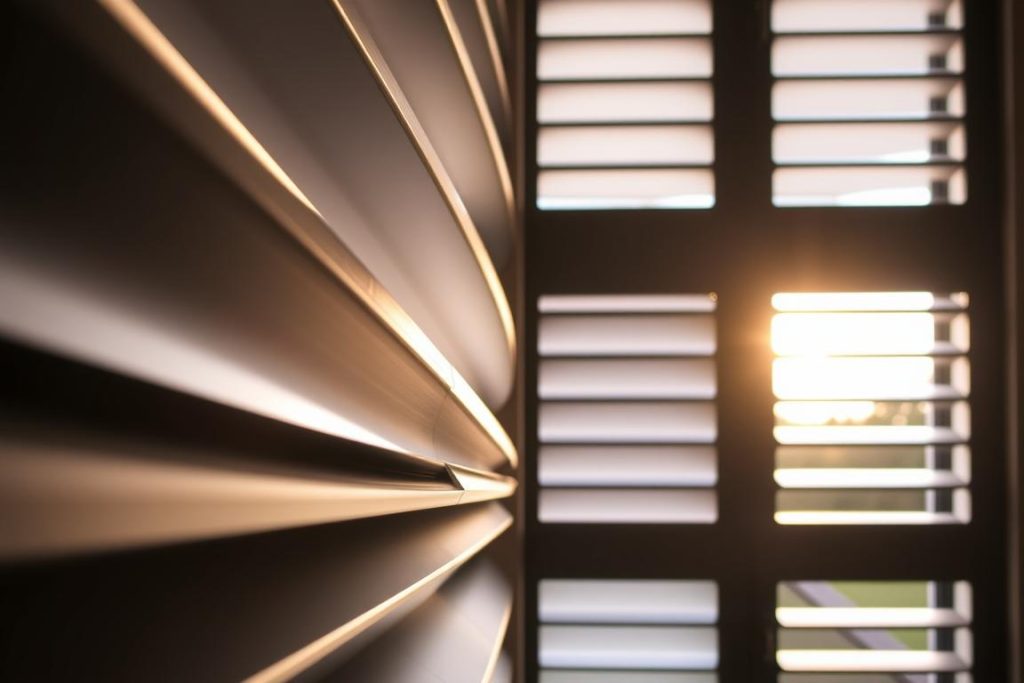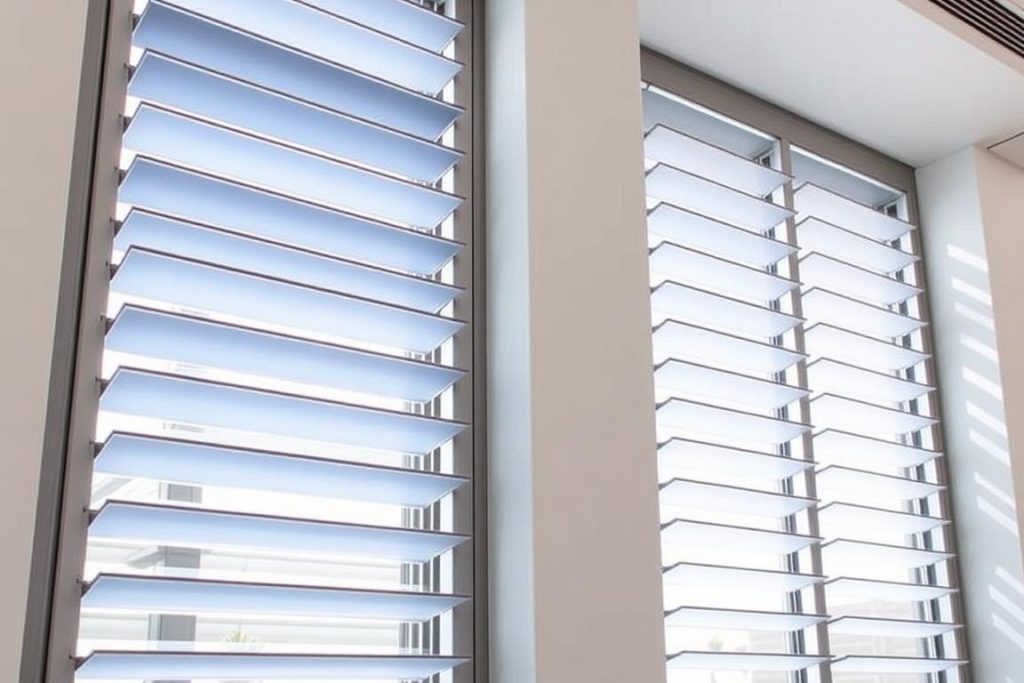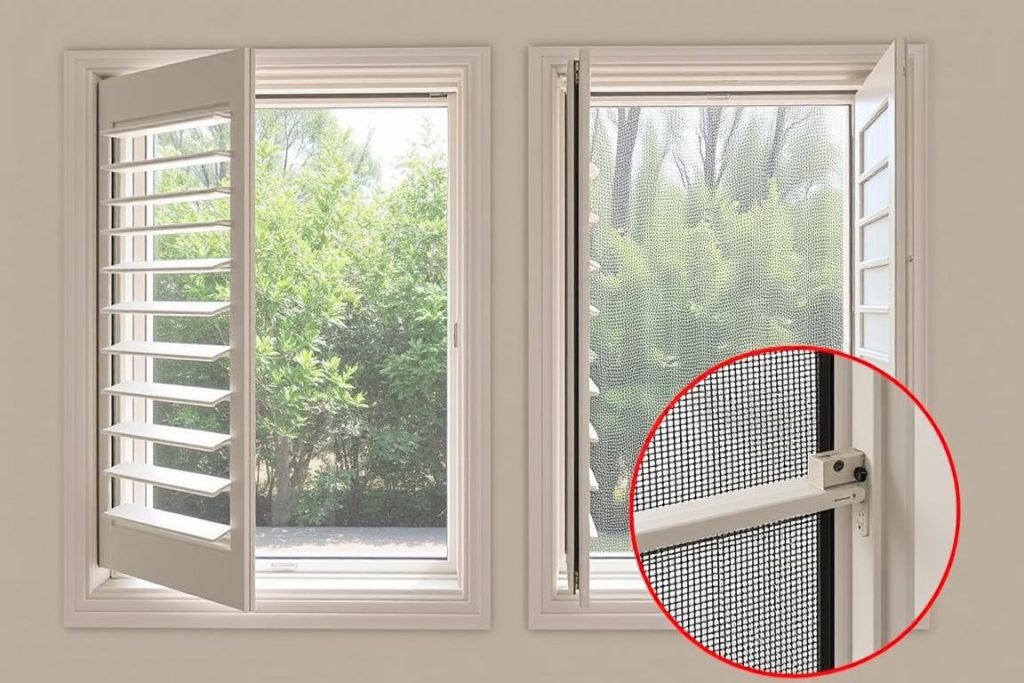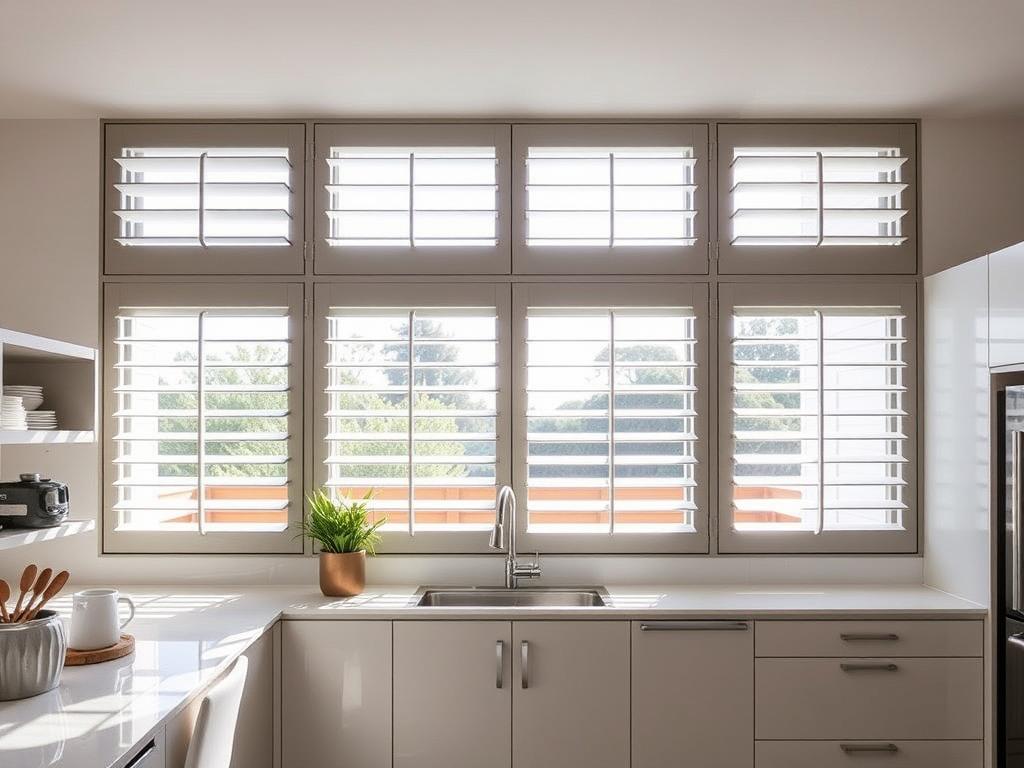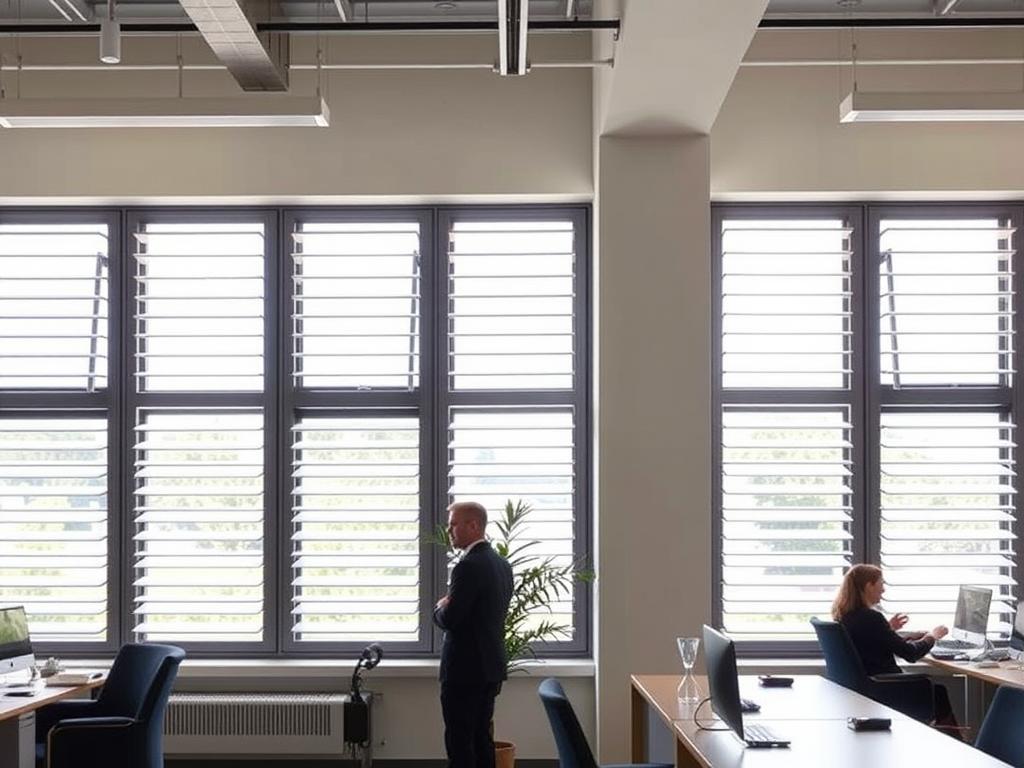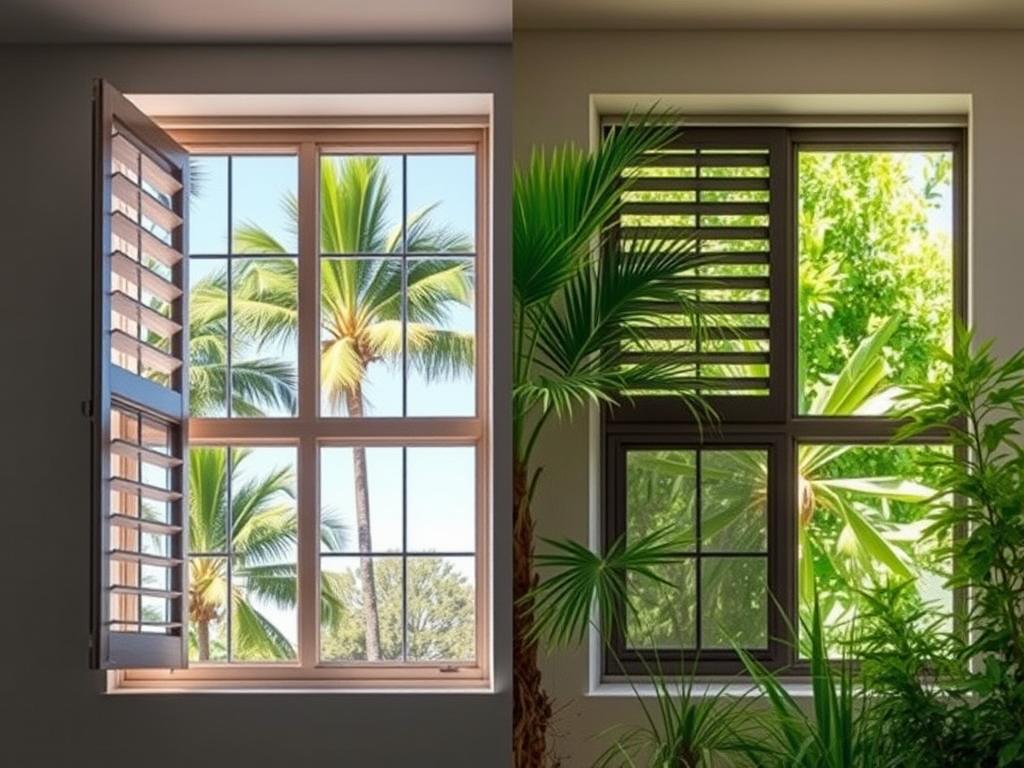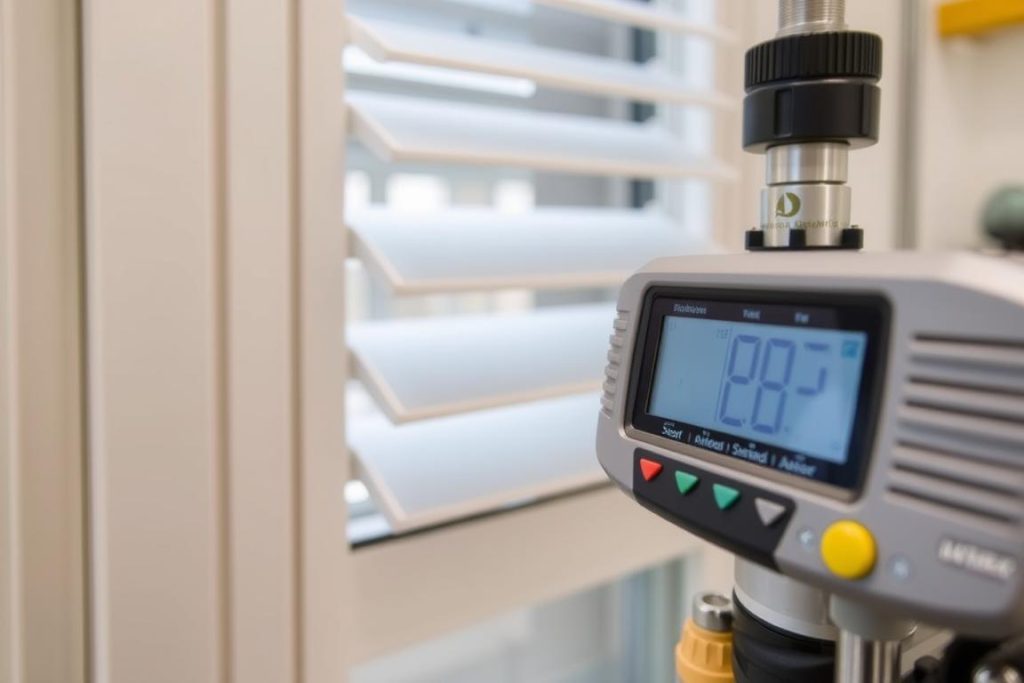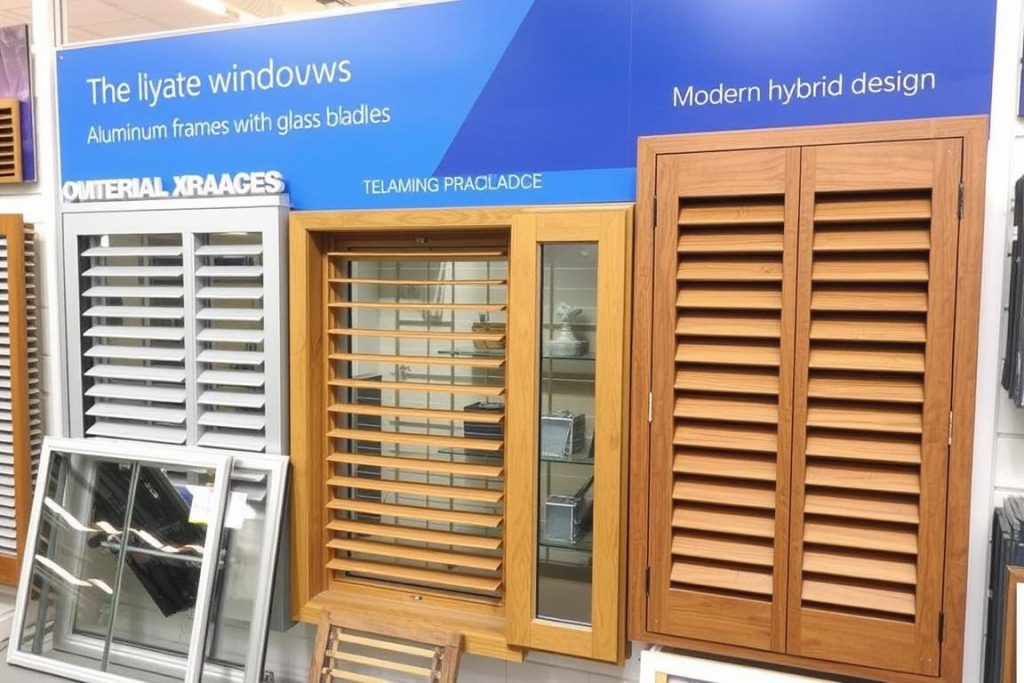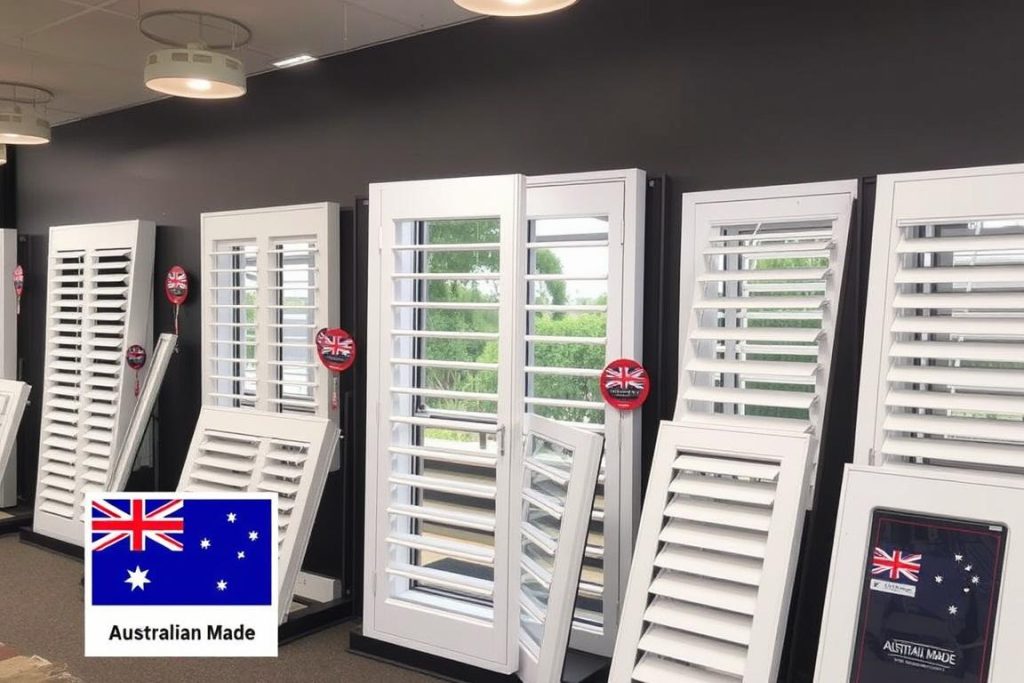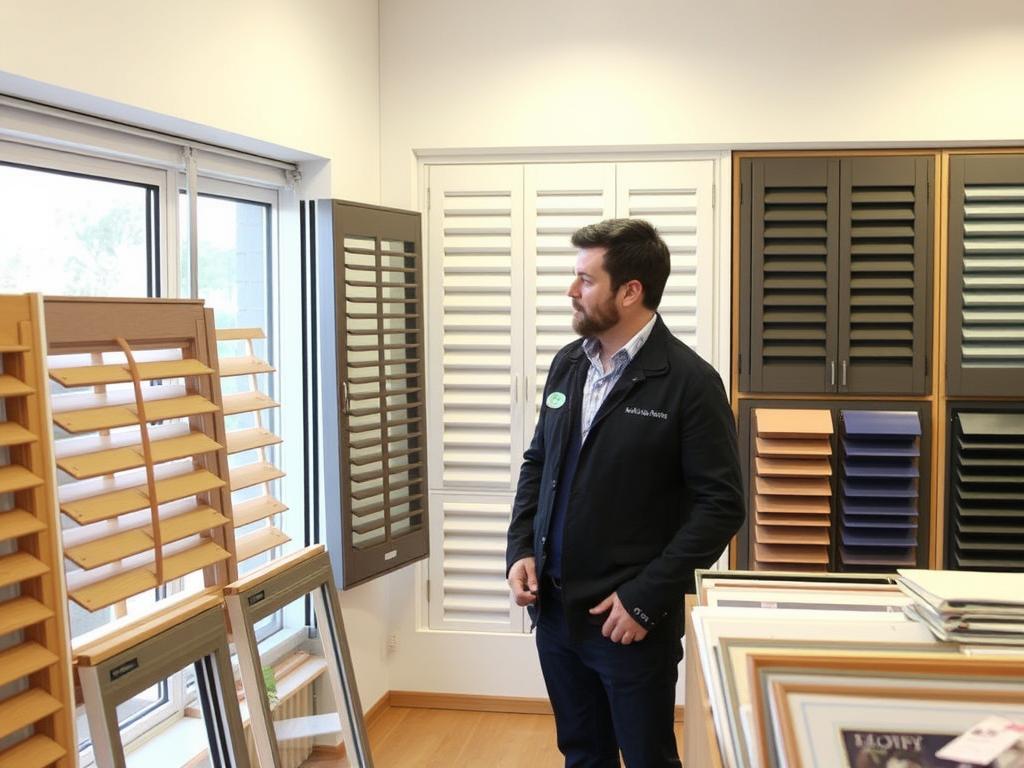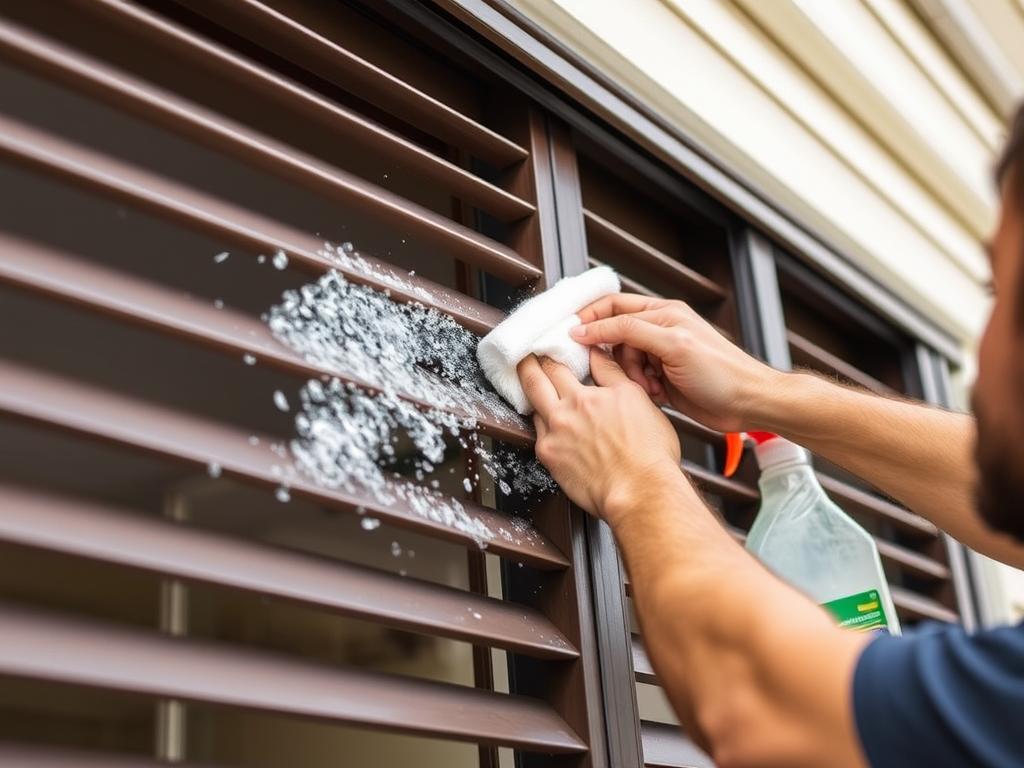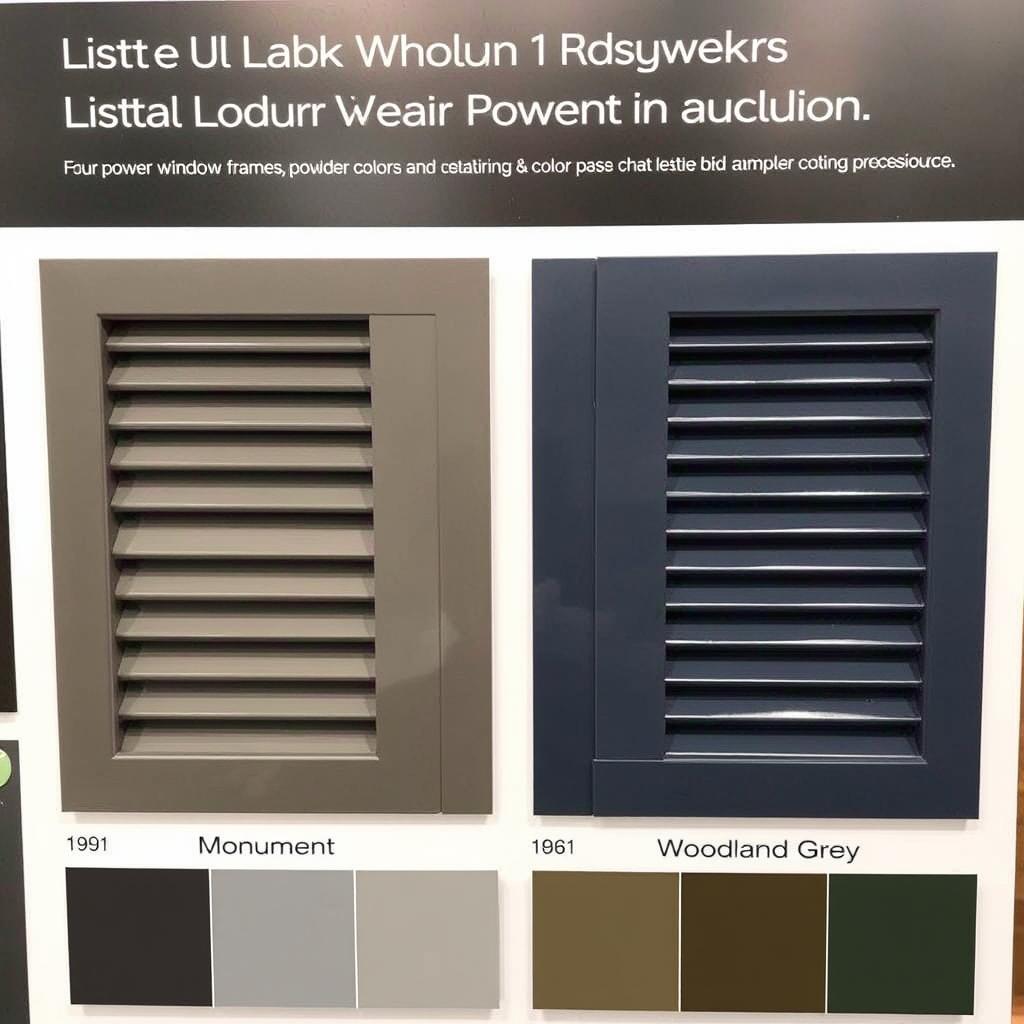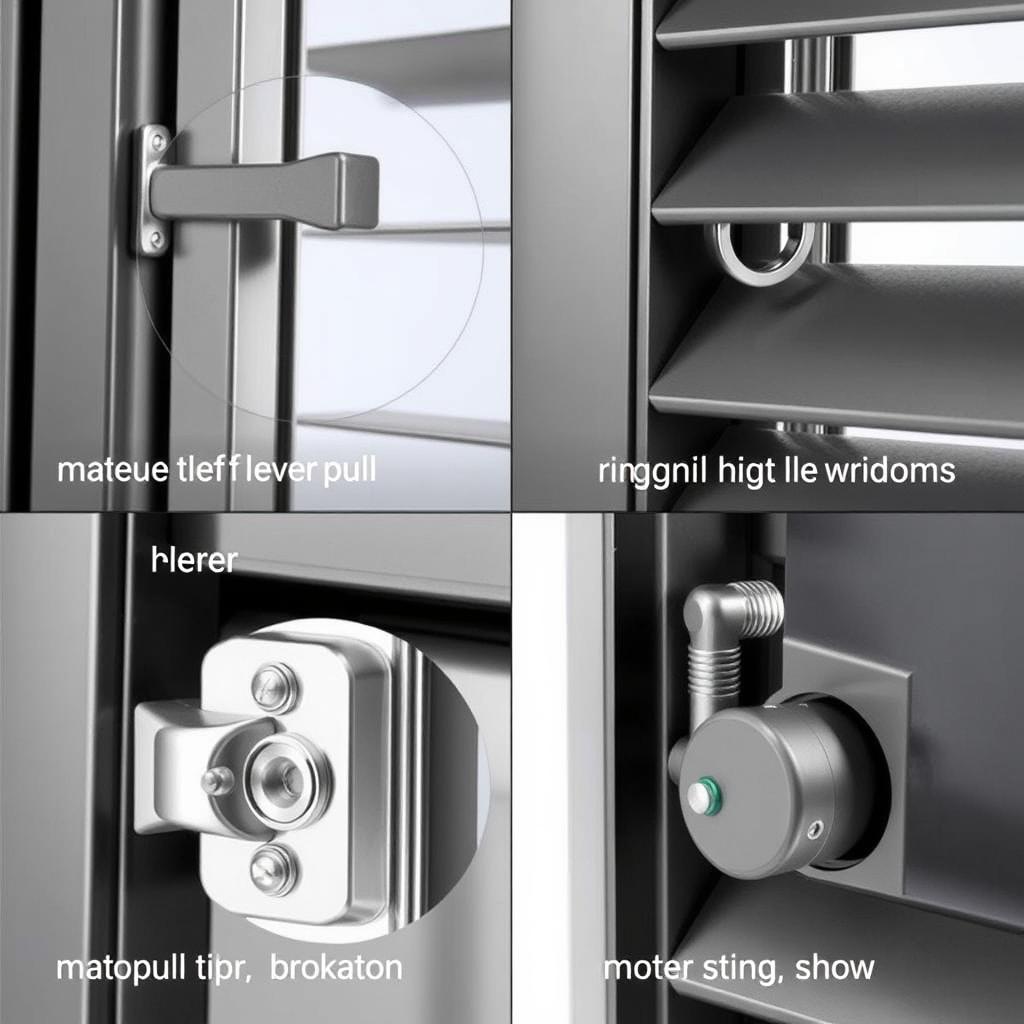What Are Louvre Windows? Understanding the Basics
Louvre windows consist of horizontal blades (or slats) that can be adjusted to control airflow, light, and visibility. Unlike traditional windows that open outward or slide, louvre windows operate through a simple mechanism that allows the blades to tilt open and closed in unison, providing precise control over ventilation. Please read What Are Louvre Windows?
Historical Evolution
Originally developed in the Middle Ages, louvre windows have evolved significantly over centuries. Their popularity in Australia began in the mid-20th century when their practical benefits for tropical and subtropical climates became apparent. Today’s louvre windows combine this historical functionality with modern materials and engineering.
Basic Design Elements
Modern louvre windows in Australia typically feature:
- Horizontal blades made from glass, aluminum, or timber
- Durable frames (commonly aluminum)
- Lever or handle mechanisms for easy operation
- Optional security features including locks and screens
- Weatherproof seals for climate protection
Key Benefits of Louvre Windows for Australian Properties
Louvre windows offer numerous advantages that make them particularly well-suited to Australia’s climate and lifestyle needs. Their unique design provides solutions to common ventilation and aesthetic challenges.
Superior Ventilation Control
Unlike conventional windows that open fully or not at all, louvre windows allow for precise adjustment. This means you can:
- Direct airflow exactly where needed
- Create cross-ventilation throughout your space
- Maintain ventilation even during light rain
- Reduce reliance on air conditioning systems
Aesthetic Versatility
Louvre windows contribute significantly to architectural design:
- Clean, horizontal lines create visual interest
- Available in various materials to match any aesthetic
- Can be customized with different blade sizes
- Work in both traditional and contemporary designs
- Create distinctive light patterns throughout the day
Practical Advantages
Beyond aesthetics and ventilation, louvre windows offer:
- Easy cleaning from inside the building
- Compatibility with security and insect screens
- Space efficiency with no inward or outward swing
- Excellent sound insulation when properly sealed
- Low maintenance requirements
Ready to explore louvre window options for your property?
Our window specialists can help you determine the ideal configuration for your specific needs and climate conditions.
Design Versatility: Louvre Windows for Homes and Businesses
Louvre windows offer exceptional design flexibility, making them suitable for various applications across both residential and commercial settings throughout Australia.
Residential Applications
In Australian homes, louvre windows excel in multiple settings:
- Bathrooms: Provide privacy with frosted glass while allowing steam to escape
- Kitchens: Effectively remove cooking odors and heat
- Bedrooms: Allow night ventilation with security features
- Living areas: Create seamless indoor-outdoor connections
- Laundry rooms: Help manage humidity and moisture
Many homeowners combine louvre windows with fixed panels to maximize views while maintaining ventilation control.
Commercial Applications
Australian businesses benefit from louvre windows in numerous ways:
- Offices: Improve air quality and reduce energy costs
- Cafés and restaurants: Create indoor-outdoor dining experiences
- Retail spaces: Enhance storefront appeal and natural lighting
- Educational facilities: Provide controlled ventilation for classrooms
- Healthcare settings: Support air circulation in waiting areas
Commercial installations often feature motorized systems for convenient operation of high or hard-to-reach windows.
Design Integration Examples
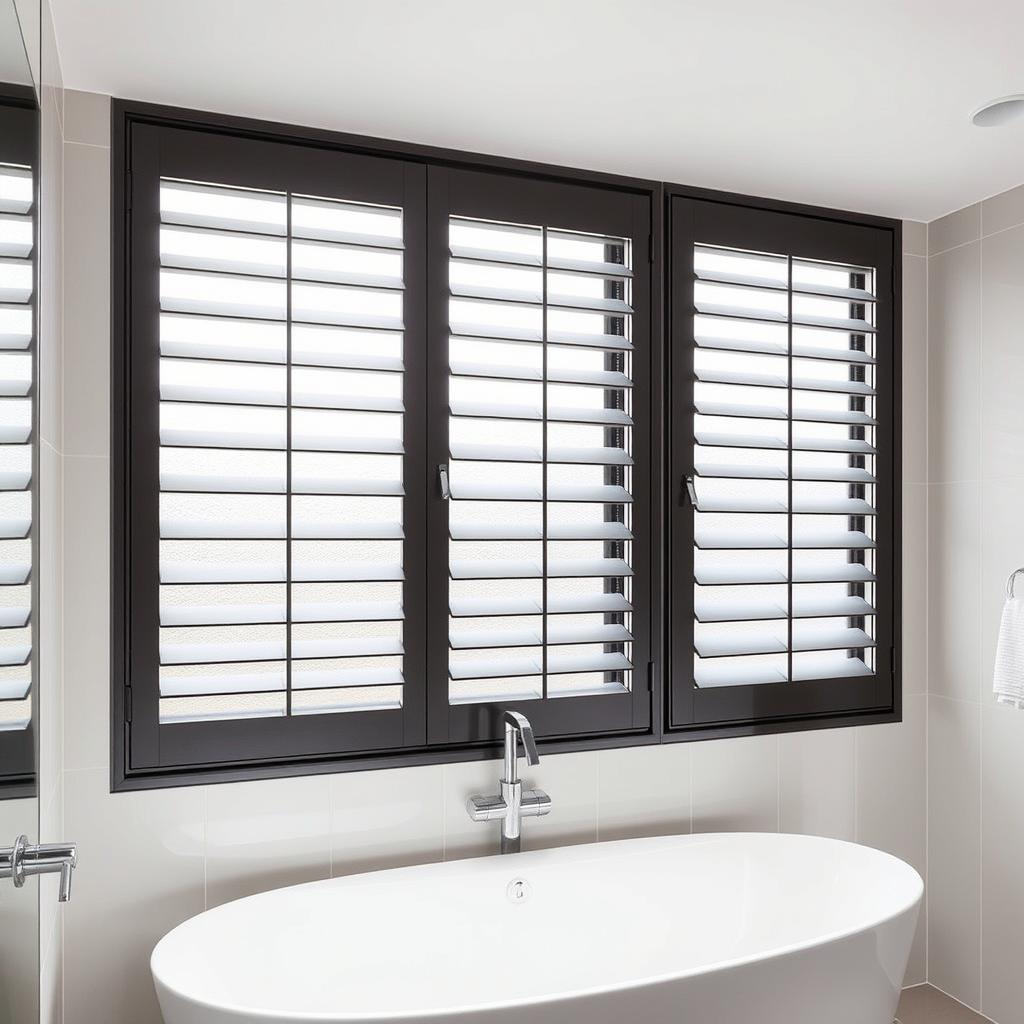
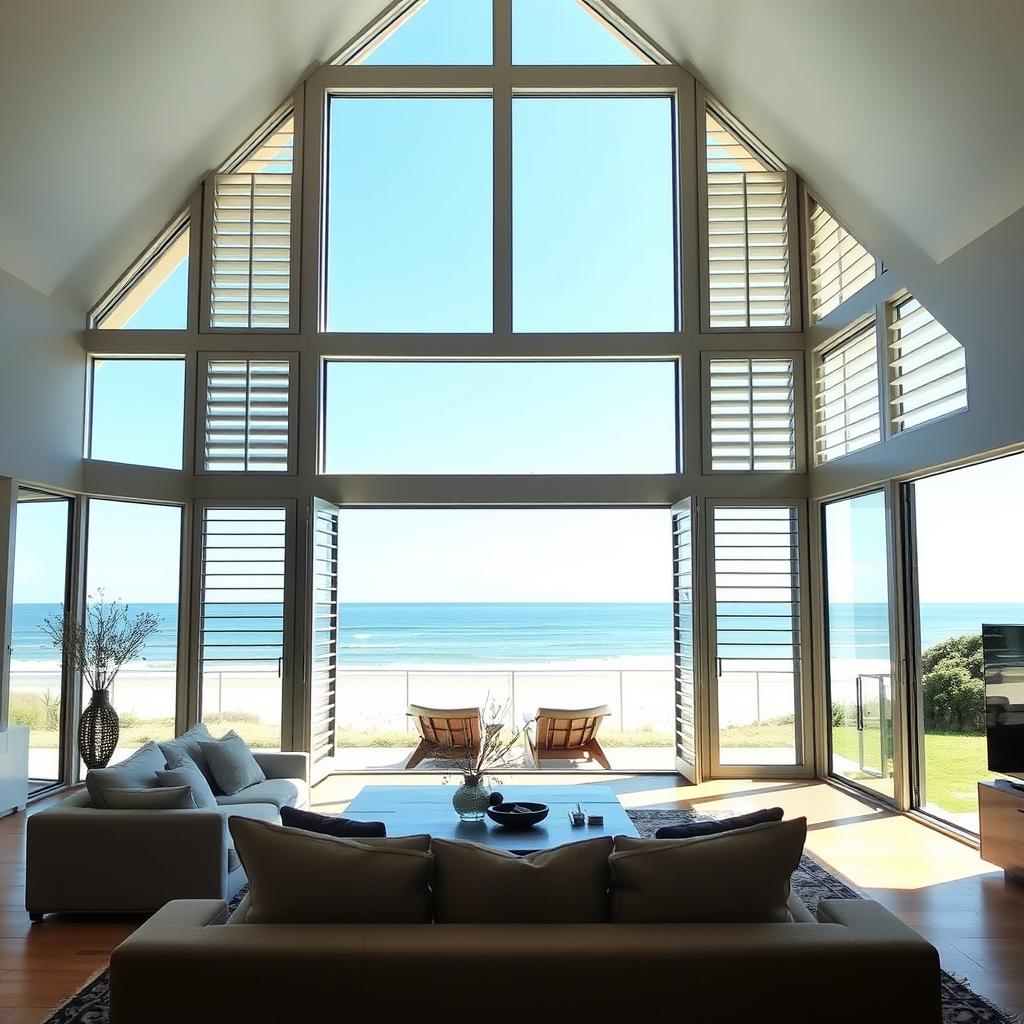
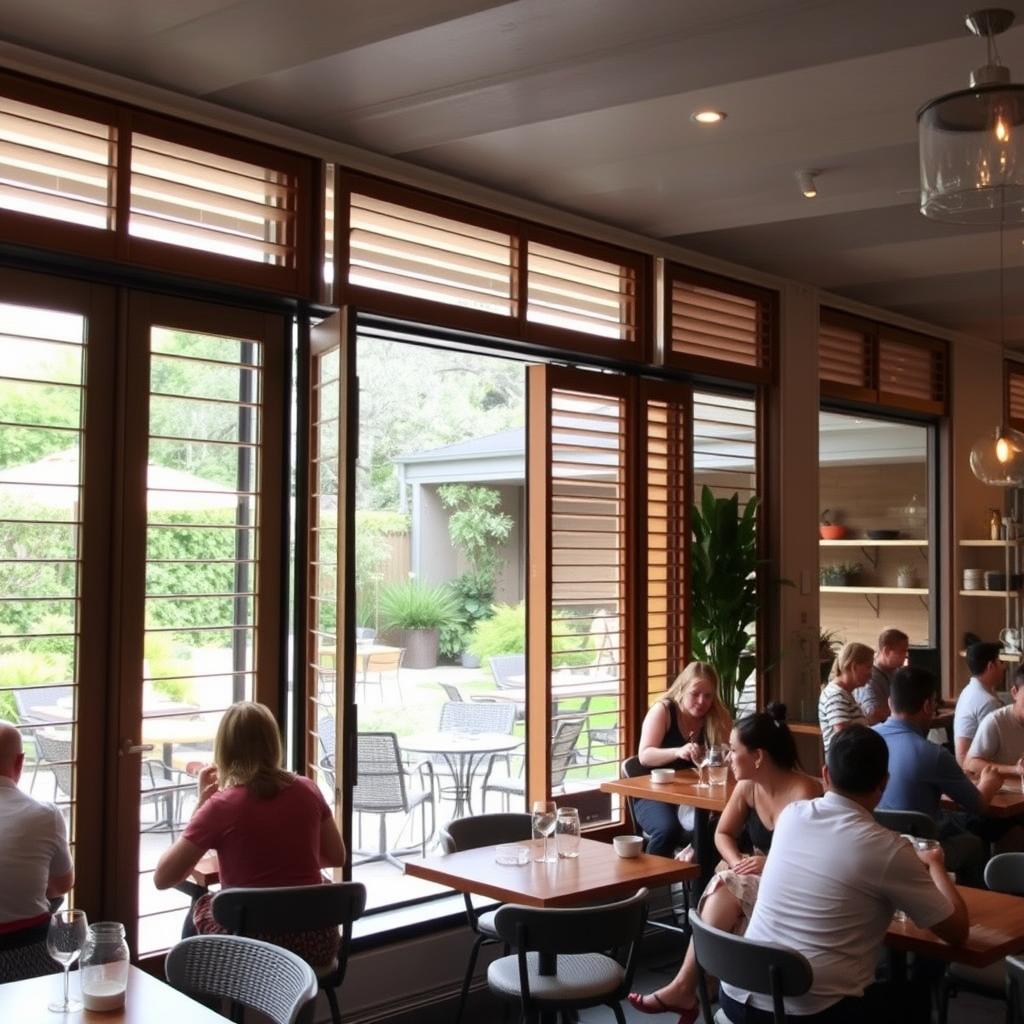
Energy Efficiency and Climate Suitability in Australia
Louvre windows are particularly well-suited to Australia’s diverse climate zones, offering natural solutions to ventilation and temperature control challenges.
Climate Adaptation
Australia’s varied climate requires versatile window solutions:
- Tropical North: Louvres excel in high humidity, allowing constant airflow while keeping out rain
- Mediterranean South: Provide seasonal ventilation control for changing conditions
- Arid Interior: Allow cool night air in while blocking daytime heat
- Temperate Coastal: Capture sea breezes and manage humidity
Energy Performance
When properly specified and installed, louvre windows contribute to energy efficiency:
- Reduce air conditioning dependency through natural ventilation
- Available with low-E glass options for improved thermal performance
- Can be fitted with double glazing in cooler regions
- Tight seals prevent unwanted air infiltration when closed
- Contribute to passive cooling strategies in sustainable design
Energy Rating Note: Louvre windows in Australia typically have U-values ranging from 3.8-6.5 W/m²K depending on materials and glazing. Lower values indicate better insulation properties.
Weather Resistance Considerations
It’s important to note that while louvre windows offer excellent ventilation, they have specific weather resistance characteristics:
Strengths
- Excellent for moderate rain conditions when partially open
- High-quality seals provide good protection when fully closed
- Modern designs include water channels to direct moisture away
- Available with cyclone ratings for high-wind areas
Limitations
- May allow some water ingress during driving rain when open
- Require closing during severe weather events
- Multiple blade edges create more potential sealing points
- Performance varies significantly between quality levels
Not sure if louvre windows suit your local climate?
Our window experts can assess your specific location and recommend the ideal configuration for your climate zone.
Comparing Louvre Windows to Alternative Ventilation Solutions
Understanding how louvre windows compare to other window types helps in making informed decisions for your Australian property.
| Feature | Louvre Windows | Sliding Windows | Awning Windows | Double Hung Windows |
| Maximum Ventilation | Excellent (90-100% opening) | Moderate (50% opening) | Limited (30% opening) | Moderate (50% opening) |
| Airflow Direction Control | Excellent | Limited | Good | Good |
| Weather Resistance (when open) | Moderate | Poor | Excellent | Poor |
| Security | Good (with proper locks) | Excellent | Excellent | Good |
| Cleaning Ease | Excellent | Moderate | Difficult | Good |
| Aesthetic Impact | High | Moderate | Moderate | High |
Key Differentiators of Louvre Windows in Australia
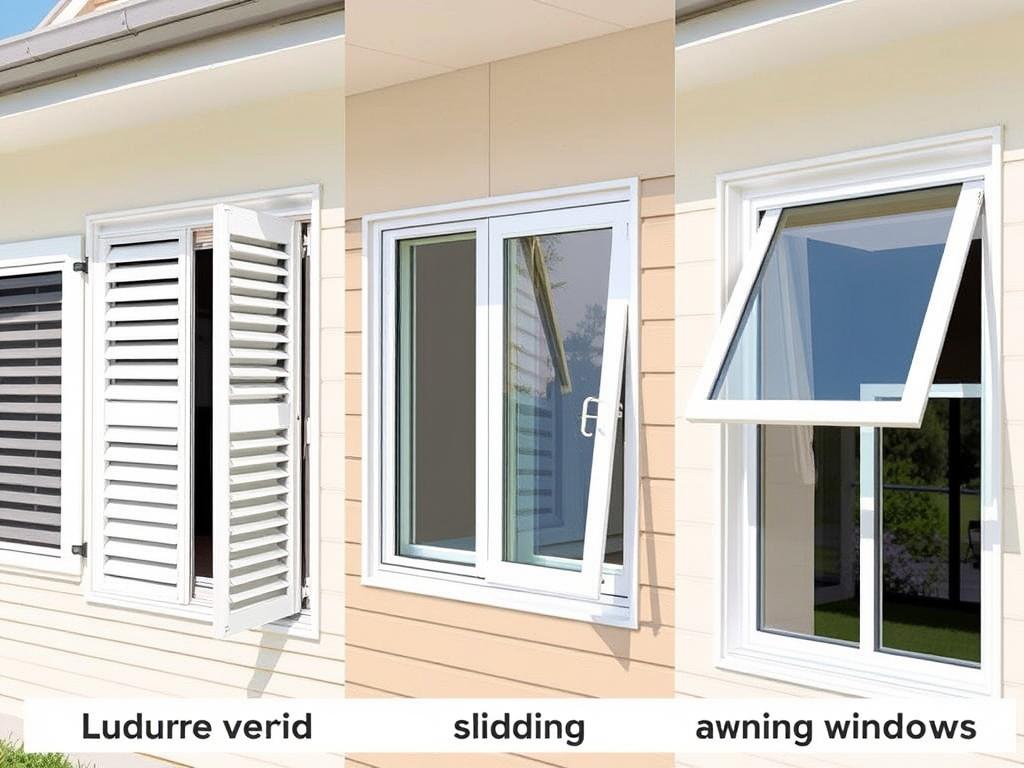
Louvre windows stand out from alternatives in several important ways:
- Ventilation Volume: Provide up to 100% opening area compared to 50% for most alternatives
- Directional Control: Unique ability to channel breezes up, down, or straight through
- Space Efficiency: No swing space required inside or outside
- Visual Distinction: Create a distinctive architectural statement
- Adaptability: Can be partially opened during light rain, unlike most window types
Louvre Windows in the Australian Context
The Australian market offers specific considerations for louvre window selection, installation, and compliance.
Australian Standards Compliance
Quality louvre windows in Australia must meet several standards:
- AS2047: Performance requirements for windows
- AS1170: Structural design actions including wind loads
- AS1288: Glass in buildings – selection and installation
- AS3959: Construction in bushfire-prone areas
Look for windows that have been independently tested and certified to these standards.
Popular Materials in Australia
Australian conditions influence material choices:
- Aluminium: Most popular for durability and low maintenance in coastal areas
- Timber: Preferred for heritage properties and natural aesthetics
- Glass: Clear, tinted, or frosted options for different privacy needs
- Powdercoat finishes: Wide range of colors tested for UV resistance
Material selection should consider your specific climate zone and maintenance preferences.
Leading Australian Suppliers
Several quality manufacturers specialize in louvre windows for Australian conditions:
- Breezway (premium louvre systems)
- Bradnam’s Windows & Doors
- AWS (Architectural Window Systems)
- A&L Windows
- Rylock Windows
Many offer Australian-made products specifically designed for local conditions.
Want to ensure your louvre windows meet Australian standards?
Our specialists work with leading Australian manufacturers to provide compliant, high-quality solutions.
Practical Tips for Louvre Window Selection and Maintenance
Maximizing the benefits of louvre windows requires careful selection and proper maintenance.
Selection Considerations
When choosing louvre windows for your Australian property, consider:
- Blade size: Larger blades (152mm) provide better views; smaller blades (102mm) offer more precise control
- Frame depth: Deeper frames (125mm+) provide better structural integrity for larger openings
- Sealing quality: Look for compression seals and overlapping blade designs
- Hardware durability: Stainless steel components are essential in coastal areas
- Security options: Keyed locks and security screens should be considered from the outset
Maintenance Advice
Keep your louvre windows performing optimally with these maintenance tips:
- Clean tracks and mechanisms regularly to prevent buildup of dust and debris
- Lubricate moving parts annually with silicone-based products (avoid petroleum-based lubricants)
- Check and tighten screws periodically, especially in areas with high vibration
- Clean glass blades with standard glass cleaner; use appropriate cleaners for timber or aluminum
- Inspect weather seals annually and replace if showing signs of wear
Important: Never force louvre mechanisms if they become stiff. This can damage the gearing system. Instead, clean and lubricate the components.
Customization Options
Size Variations
Louvre windows can be customized to fit various openings:
- Heights from 400mm to 3000mm
- Widths from 400mm to 1200mm per panel
- Multiple panels can be joined for wider openings
- Custom sizes available for unique architectural requirements
Color Options
Australian suppliers typically offer:
- Standard colors (White, Black, Monument)
- Popular Australian palette (Surfmist, Woodland Grey, Dune)
- Anodized finishes for coastal durability
- Custom colors to match existing elements
- Wood-look finishes for aluminum frames
Operation Methods
Choose from several operation methods:
- Standard lever handles (left or right orientation)
- Ring pull handles for high windows
- Extension poles for out-of-reach operation
- Motorized systems with remote control
- Smart home integration options
Embracing Louvre Windows in Australian Design
Louvre windows represent an ideal marriage of form and function for Australian properties. Their ability to maximize ventilation while providing aesthetic appeal makes them a standout choice for both residential and commercial applications across the country’s diverse climate zones.
From the tropical north to the temperate south, these versatile windows offer practical solutions to ventilation challenges while contributing to energy efficiency and architectural character. Their adaptability to different materials, sizes, and configurations ensures they can complement any design vision.
As Australia continues to embrace sustainable building practices and indoor-outdoor living, louvre windows remain at the forefront of ventilation solutions that enhance comfort while reducing environmental impact.
Ready to transform your space with louvre windows?
Contact our window specialists today to discuss your specific requirements and discover the perfect louvre window solution for your Australian property.
Frequently Asked Questions About Louvre Windows in Australia
Are louvre windows energy-efficient in Australia’s hot climates?
Louvre windows can be highly energy-efficient in hot Australian climates when used strategically. They allow for maximum natural ventilation, which can significantly reduce the need for air conditioning. For optimal efficiency, consider:
- Installing louvres on opposite walls to create cross-ventilation
- Choosing low-E glass options to reduce heat transfer
- Using tinted glass in western-facing windows to reduce afternoon heat gain
- Ensuring proper seals for when windows are closed during extreme heat
In tropical and subtropical regions of Australia, louvre windows can be part of a comprehensive passive cooling strategy that dramatically reduces energy consumption.
How do louvre windows perform in terms of security compared to other window types?
Modern louvre windows in Australia offer significantly improved security compared to older designs. Key security features include:
- Integrated key locking systems that secure all blades simultaneously
- Compatibility with security screens and grilles
- Tamper-resistant mechanisms and frame designs
- Options for laminated glass for additional break-in protection
While traditional sliding and awning windows may offer marginally better inherent security, properly specified louvre windows with appropriate security features provide comparable protection while maintaining their ventilation advantages.
What maintenance is required for louvre windows in coastal Australian areas?
Coastal areas present specific challenges due to salt exposure. For louvre windows in these locations:
- Rinse frames and hardware with fresh water every 1-2 months to remove salt buildup
- Choose marine-grade stainless steel hardware and mechanisms
- Select anodized or high-grade powder-coated finishes for frames
- Apply silicone-based lubricants to moving parts quarterly
- Inspect and clean rubber seals regularly to prevent salt damage
With proper maintenance, quality louvre windows can perform excellently even in harsh coastal environments. Many Australian manufacturers offer specific coastal warranties for properly maintained products.
